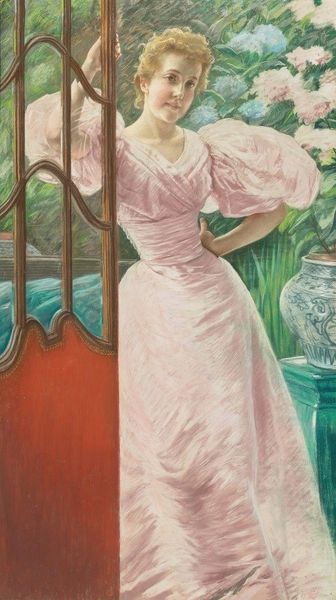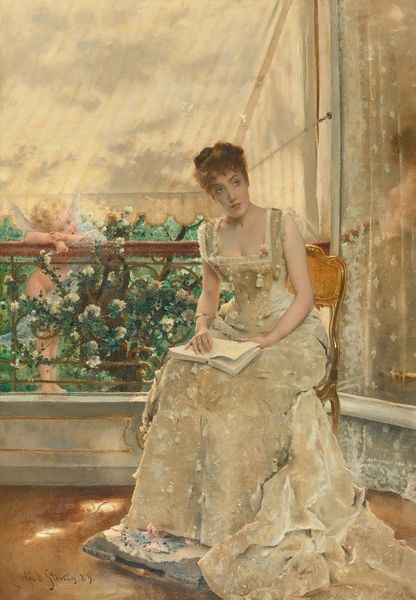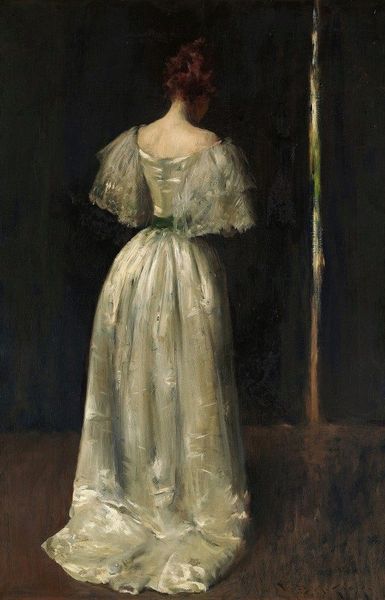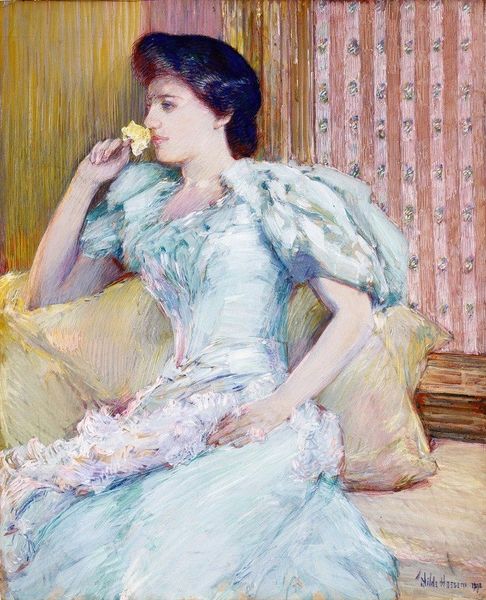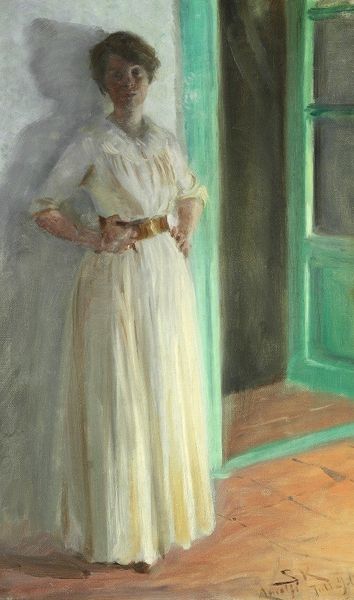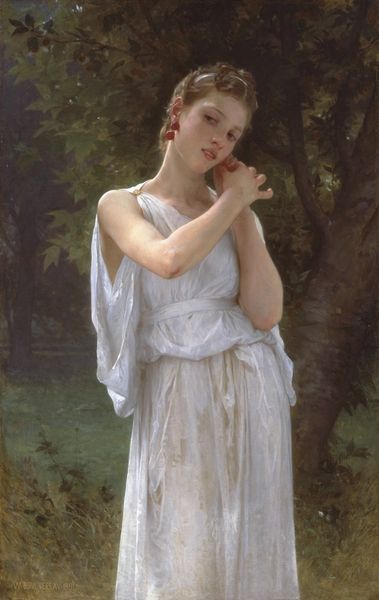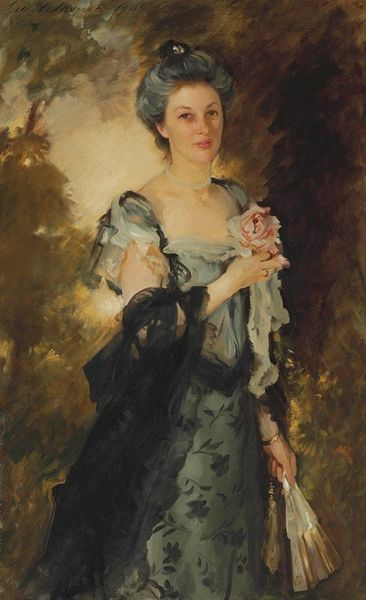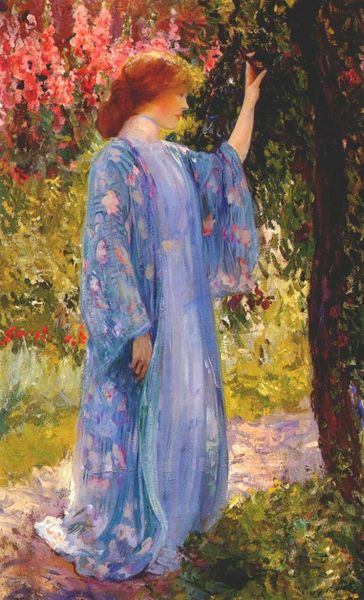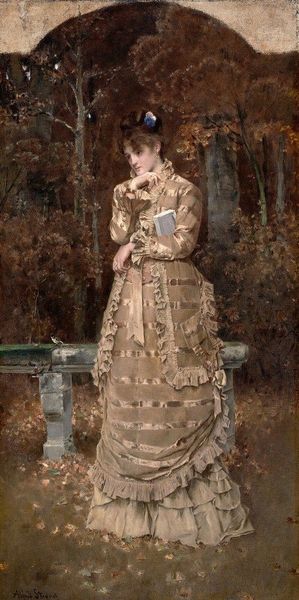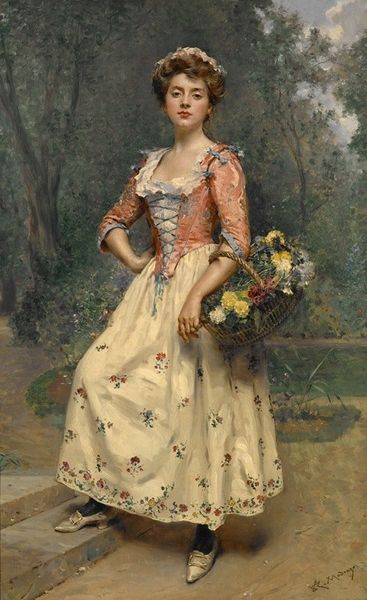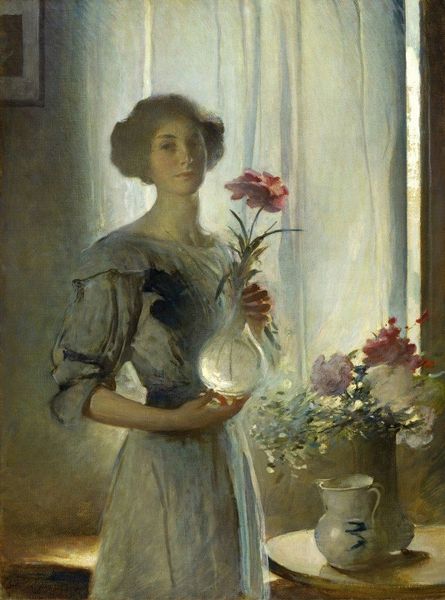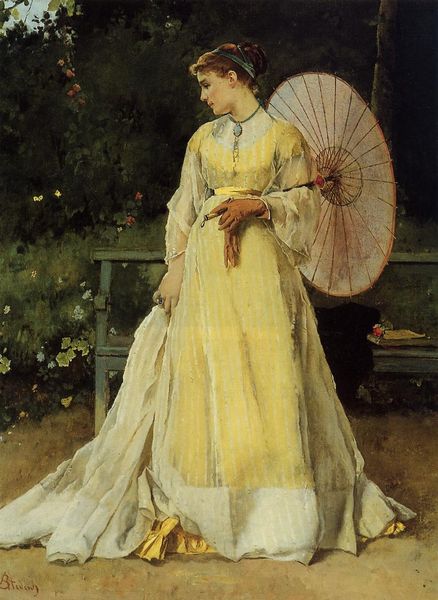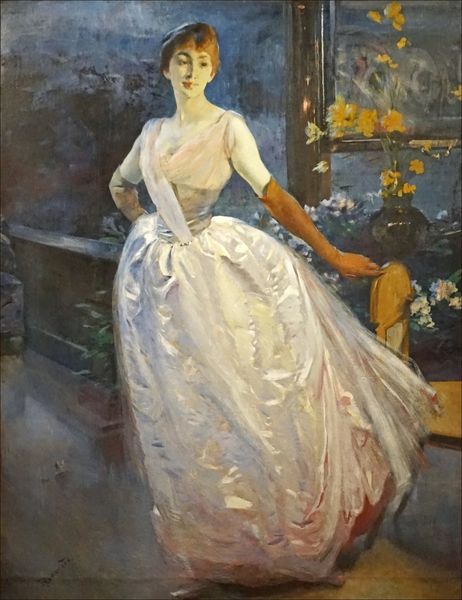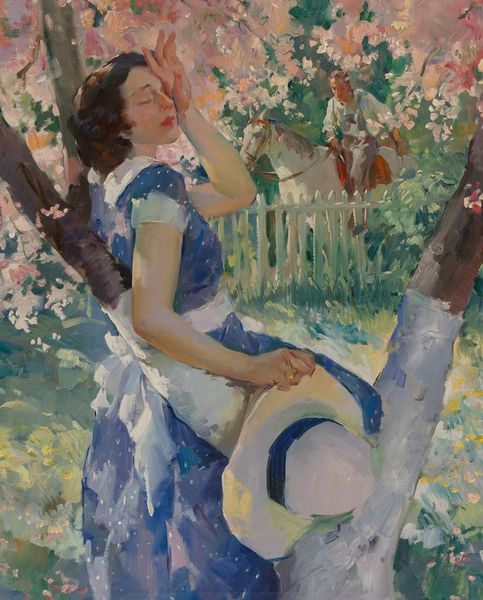
painting, oil-paint
#
portrait
#
gouache
#
figurative
#
painting
#
oil-paint
#
landscape
#
romanticism
#
genre-painting
#
realism
Copyright: Public Domain: Artvee
Editor: So, this is L.A. Ring’s painting, "At The French Windows. The Artist’s Wife," and it looks like an oil painting. There’s such a contemplative mood, and the figure is positioned so deliberately. How do you interpret this work, especially considering its materiality? Curator: It's fascinating to consider this piece through a materialist lens. I see a focus on the means of production. Oil paint itself, refined and costly in its time, speaks to the burgeoning middle class and their desire for representation and the accumulation of commodities. What do you notice about the wife's dress and its folds, how the material drapes? Editor: I see that the folds in her dress suggest the amount of labor required for its creation and maintenance. It’s not just paint on canvas, but speaks to textile production and the implied work of keeping such a garment pristine. And what about the window itself? Curator: Exactly. The French window, framed by that ornate curtain, isn't just a portal. It's a commodity produced through industrial means – glass, manufactured wood, imported textiles – each carrying its own history of extraction and labor. The very act of looking through it becomes a consumerist gesture. Are we seeing her interior life or the curated scene outside the window as an aesthetic possession? Editor: That makes me think about the tension between “high art” – the painting itself – and the more ‘domestic’ or ‘craft’ elements represented, like her dress, and the textiles in the room. Was Ring commenting on these artificial divisions? Curator: Precisely! Ring subtly blurs the lines. He elevates the everyday materials and labor of domestic life to the level of fine art, while simultaneously questioning the consumption and production that underpin even seemingly idyllic scenes. So what might we make of the relationship between figure and the labor implicit within that outside scene. Editor: I hadn’t considered all the levels of production involved. I now see how the painting's "realism" actually masks layers of material complexities and societal forces. Thanks for highlighting those things. Curator: And thank you for recognizing all the effort it took to create the materials used in the artwork and that it references!
Comments
No comments
Be the first to comment and join the conversation on the ultimate creative platform.
